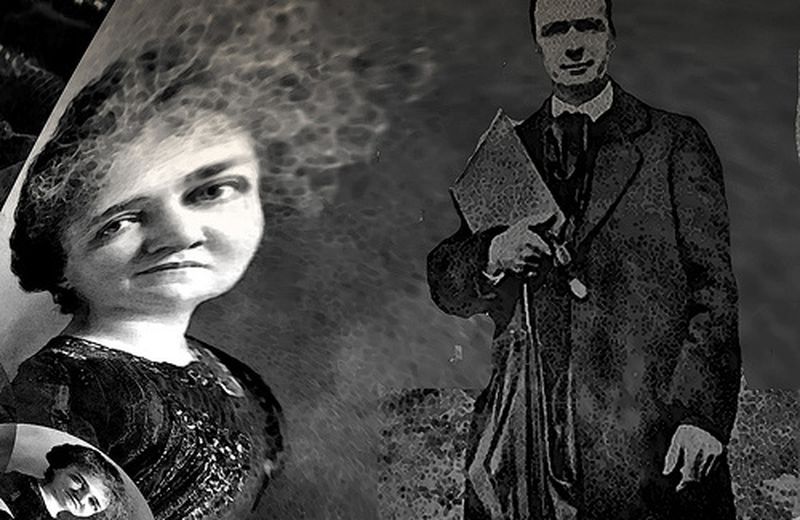Medical Anthroposophy
Like other alternative or complementary disciplines, medical anthroposophy or anthroposophical medicine is considered in official scientific circles to be nothing more than a philosophical system to which therapeutic methods are associated that are completely unverifiable in the conventional experimental paradigm of the so-called West. We are better acquainted with medical anthroposophy

Steiner and anthroposophy
“ Anthroposophy is a path of knowledge, which guides the spirit in man towards the spirit of the universe. It arises in individuals as a need of the heart and sentiment and is justified as an attempt to satisfy an inner need. It can only be understood by those who find there what they themselves feel the need to discover. Therefore, anthroposophists are those who feel an essential need for life, certain questions about human nature and the universe, just as one feels hunger and thirst ”- Rudolf Steiner, Principal Thoughts of Anthroposophy , 1904.
To overcome the abstractions of modern Western philosophy, and referring in part to Goethe, a master of knowledge of nature, and in part to Madame Blavatsky’s theosophy, Rudolf Steiner emphasizes the objective existence – and therefore objectively studyable – of the spiritual world . His direction of thought takes the name of anthroposophy , that is “sapiential knowledge of the human being”: and the human being is the organic synthesis of different levels – body, soul and spirit (which is not one level among others, but the very unity of the Whole). Furthermore, the spiritual consciousness of the individual, which is of the same nature as the divine one, is enveloped in four envelopes or bodies .: the physical or gross body, the etheric body, the astral or soul body and the egoic body or I. The world of the spirit is in constant evolution, and each of its metamorphoses affects man as a limited living being but also oriented towards an ever more transpersonal and free awareness.
Steiner argues that man is a tripartite being, composed of body (the organic set of natural and vital processes), soul (the median and mediating part, seat of imagination, emotions, etc.) and spirit (the creative spark. and dynamics that unite the human and the divine). Precisely for this reason , any therapy that does not want to be reduced to the repair of a faulty machine (the body understood as a purely material aggregate of organs and functions) must be holistic , that is, address man as an integral synthesis (in Greek holon) of its three levels: hence the emphasis on methods of treatment that involve the senses, aesthetic perception and spiritual consciousness as a whole (we recall in particular the eurythmy, a pedagogical art in which the interiority – feelings , emotions, thoughts – is translated into symbolic gestures related to dance). That proposal is a brief smattering of anthroposophy. But what does medical anthroposophy consist of?
Inside medical anthroposophy
Also defined as ‘pseudo-medicine’, medical anthroposophy , the medical branch of the philosophical corpus of anthroposophy, belongs to the pseudosciences , as it is not based on an experimental method, the basis of modern science. In fact, Steiner ‘s principles do not contain any scientific foundation and are comparable to metaphysics , while pharmacological preparations have the same scientific value as homeopathic preparations.
Traditional drugs considered harmful to health (antibiotics and vaccines) are used only in exceptional cases. The tendency of anthroposophy is to prefer natural substances (taken from minerals, plants and animal organs) for medicaments. They are therefore drugs attributable to homeopathic products even if, unlike the latter, they are produced in liquid and not solid form. Exclusive drug treatment is often found to be inadequate for treating diseases. For anthroposophy, these involve, in addition to the component component of the subject, also the psychic and spiritual one. Art therapy, eurythmy and psychology treatments are therefore of fundamental importance. The patient will undergo these therapies under the supervision of their doctor. In the clinics ofanthroposophical medicine lends great interest to what is able to ensure the patient a state of general well-being, whether physical or mental. Hence, among those definable as anthroposophical therapies, there are baths, massages, special diets and walks.
No to vaccines and antibiotics. One of the controversial points of medical anthroposophy is the refusal, not always indiscriminate (and indeed shared by other “natural” medicines), of tools typical of modern medicine, such as vaccinations (mandatory and recommended), antibiotics and antipyretics , which according to Rudolf Steiner violently intervene in human physiology disturbing the work of Nature, which is the true physician of itself. Even if it seems that children raised according to these principles are less vulnerable to allergies, these are positions not to be taken literally: otherwise one dogmatism would be replaced by another.
Eurythmy. Eurythmy is considered an art form of movement. It was created by Rudolf Steiner and his wife, Marie von Sivers . Eurythmy is not to be confused with dance or gymnastics. In its artistic component, it is practiced by soloists or by groups as part of scenic representations whose purpose is to make visible the laws of speech and music. In addition to this intent, eurythmy is of considerable importance in the therapeutic field, as part of anthroposophic medicine.. The development of therapeutic eurythmy began in 1921, when Steiner taught a course aimed at doctors. Through continuous reformulation and also thanks to constant medical-anthroposophical research, eurythmy becomes a fundamental component of the treatment systems of anthroposophical medicine.
In conclusion, it must be said that many of Rudolf Steiner’s intuitions and prescriptions of medicine are found almost identical in other respectable therapeutic traditions, to which conventional doctors could look at at least with the curiosity and openness that befits men of science.
























+ There are no comments
Add yours